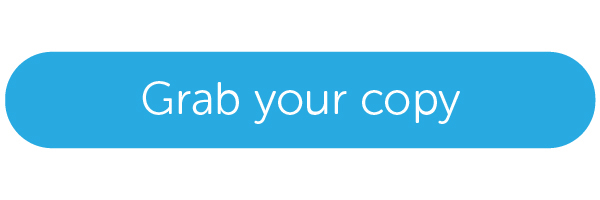Your online training program has all the essentials. You’ve made sure your content is up-to-date, added quizzes to make your courses more interactive, and even included post-training surveys to gather feedback.
Your training is set for success. However, you still notice low performance among your employees. Or decreased employee satisfaction and productivity levels.
It may be time to do a skills gap analysis.
It’s possible your training doesn’t cover your employees’ training needs. To build successful training programs, you need to identify skill gaps to pinpoint and address (or avoid) performance issues.
In this article, we’ll talk about why you need to conduct a skills gap analysis and how to go about it. We’ll also offer a free skills gap analysis template to help you get started.
What you’ll find in this article:
- What is a skills gap analysis?
- Why conduct a skills gap analysis?
- What do skills gaps look like?
- How to conduct a skills gap analysis: A step-by-step guide
- Skills gap analysis benefits for employees and employers
- Make skills gap analysis an ongoing activity
What is a skills gap analysis?
A skills gap analysis is a tool that lets you assess and identify skills gaps—that is, the difference between your workforce’s current capabilities and what they’ll need to meet the current and future demands of your business strategy.
Conducting a skills gap analysis helps you understand how to address the skill gap through upskilling, reskilling, L&D investments, and succession planning.
Why conduct a skills gap analysis?
Performance gaps can happen anytime, anywhere, and at any organizational level or department. It’s common to identify them while conducting a performance gap analysis or training needs analysis.
However, identifying gaps is not enough. If you fail to address them, they can cause problems that cost more time and money to fix. For instance, you might notice that one of your sales reps is missing their targets. This, in turn, affects the whole sales team as they’re missing their monthly objectives as a group.
A skills gap analysis helps you identify skills gaps, create a strategy to bridge them, and implement actionable solutions to address them. This is helpful in some specific areas. For instance, you’ll use a skills gap analysis for:
Strategic workforce planning
Conducting a skills gap analysis enables you to identify the hard and soft skills your team needs to meet business goals. It will help you with growing employee strengths for the future.
Protecting your investment in employee learning and development
A skill gap analysis shows where your employees need improvement. That way, you know exactly where to put your L&D budget to have the greatest impact. It provides you with a roadmap for employee development and training plans that will drive profitability and give you a competitive edge.
Preparing for digital transformation
The way we work is constantly changing with the rapid technological advancements. A skills gap analysis prepares your team for digital transformation. Plus, it helps identify competencies they’ll need to adopt new technologies.
What do skills gaps look like?
There are several types of skills gaps you might see in your organization. For example:
- Technical skills gaps. These are instances where people lack proficiency in specific skills required for their job. This gap could be due to updates to technology or processes. It’s also common to need technical skills training for new hires who are just learning the ropes at work.
- Soft skills gaps. Employees may lack skills that help them work well with others. Some examples are skills in communication, teamwork, and time management. Developing soft skills can be helpful for teams that have been remote and are now moving back to the office. Or teams where miscommunication or lack of coordination causes friction and bottlenecks.
- Leadership skills gaps. Team leaders might struggle with the required skills for leadership roles, such as strategic thinking and decision-making. This can be especially true with recently promoted managers who don’t have much leadership experience.
How to conduct a skills gap analysis: A step-by-step guide
Being able to identify and address existing skills gaps is crucial for staying ahead of productivity hurdles. There are lots of ways to gather and analyze data, including using a skills gap analysis template. Whatever your method, you can ensure a successful skills gap analysis by taking the following steps.
Download our skills gap analysis template.
Fill in your data and discover your training needs in just a few clicks.

1. Define analysis scope and goals
First, define the extent of your skill gap analysis and your desired outcomes.
Start by identifying the level of analysis you’ll perform:
- Individual. This analysis focuses on a specific employee’s skill set, measuring them against those needed in their current role or a future position. It helps identify ways to enhance someone’s performance or prepare them for career advancement.
- Team. This level evaluates the collective skills of a team, comparing them to the combined skill sets they need to achieve team goals. It reveals any knowledge or expertise gaps that might hinder project completion or team effectiveness.
- Organization. Here, the analysis looks at the entire organization’s skill inventory. It compares the current workforce’s capabilities to the broader business objectives and future strategic direction. This helps identify large-scale skill deficiencies that could impact the organization’s competitiveness or ability to adapt to changing market demands.
Once you know the level of analysis you’re performing, identify your desired outcomes. Are you looking to improve employee performance? Increase competitiveness?
Knowing what you want from the analysis will help you focus on the right performance behaviors.
For example, say you want to improve your customer satisfaction scores. You should concentrate on examining relevant metrics. These might include customer satisfaction survey scores and employee performance metrics in the customer service team. You’ll also review current customer service training offerings to see whether they support the improvements you want.
2. Identify current and future skill needs
Once you know why you’re performing the analysis and what you hope to achieve, it’s time to take inventory of existing skills. What relevant skills does your team possess now? And what skills will they need to achieve your future goals?
Here are some ways to gather information for skill analysis.
Current skills analysis
Identify current skills through skills gap analysis tools like skill assessments, surveys, and performance reviews.
Review job descriptions and performance reviews. Start by revisiting job descriptions and recent corresponding performance reviews. These documents outline the core skills and competencies expected for employees’ roles and show you where there may be gaps.
Do a task breakdown. Break down employees’ daily tasks and responsibilities. Identify the necessary skills to perform each task effectively.
Get managerial input. Meet with managers, department heads, and stakeholders to discuss the skills crucial for success in an employee or team’s work. They can provide insights into emerging priorities or specific areas where additional skills would be beneficial.
Future skills analysis
Identify future skills needed by analyzing industry trends, business objectives, and emerging technology.
- Industry trends and reports. Research industry publications and reports to understand the evolving skills landscape within your field. Identify the competencies predicted to be in high demand for future success.
- Company strategy and goals. Discuss your company’s strategic plan with stakeholders. Understand how company goals might translate into new skill requirements for your role in the future.
- Emerging technologies. Explore the latest innovations relevant to your field. Consider how these technologies might change the skills needed down the road.
Combining these methods will help you conduct a thorough skills gap analysis and develop a plan to bridge any identified gaps.

3. Collect and analyze data to identify training needs
Now that you know what your organization needs, collect and analyze data that will show you any holes.
Focus on data that allows you to measure aptitude for the skills you identified in step two. You can then identify gaps by comparing current employee competencies with critical and desired skills.
Here are a few ways to gather the relevant data.
eLearning assessments
eLearning assessments give a good indication of what employees know versus their training needs. Once you have the data, you can use your LMS to pinpoint patterns and trends demonstrating more widespread issues.
For example, say employees participate in an online training simulation. The corresponding LMS graph shows that 50% of participants stopped at a particular point. The dropoff point shows you what skill they’re not grasping so you can create a new training strategy to bridge the gap.
Observations
Monitor employees on the job or during a task-based simulation to note any areas for improvement.
For instance, say you notice that most of your customer service employees have trouble using conflict resolution skills with an angry customer. This insight shows you the type of training sessions to include for targeted employee development initiatives.
Surveys
Conduct polls, surveys, and focus groups to gather employee feedback directly from learners.
Ask about their experience. Employees can often shed light on performance issues hiding beneath the surface.
For example, they can articulate whether ineffective online training courses or company policies are holding them back.
Evaluations
Take a closer look at manager evaluations and seek out patterns. For instance, you might notice a common theme among your sales staff’s latest performance reviews. Managers across the board note a lack of product knowledge. This points you toward critical skills needed on your team.
4. Analyze existing training effectiveness and make adjustments
You may already have online training materials suited for your training strategy and needs.
Evaluating your existing online training resources lets you identify what’s working and areas for improvement. Consider it a training gap analysis that lets you see which training materials you can reuse and which need to be revised.
You may also discover that your training is effective, but how you roll it out needs some work. For instance, employees may struggle to access the training on their smartphones because it hasn’t been optimized for mobile delivery.
Measure training effectiveness using metrics like training completion rates and employee feedback on the course. But also look at employee performance and business outcomes. These will tell you how people engaged with the training and whether it transferred to behavior change on the job.
Cover employees’ skills gaps with TalentLMS
Deliver engaging online courses
and build stronger teams.
5. Create a strategy to close skills gaps
Decide how you’ll address the gaps you’ve uncovered. This is the actionable part of your skills gap analysis, so make sure it’s thorough.
Your strategy may include training and development programs, recruitment, and succession planning.
Prioritize skills gaps based on business priorities and goals. You have a limited training budget. You want to ensure you invest it where it can have the most impact.
Meet with your L&D team to rank each of the performance gaps based on company profits, customer satisfaction ratings, and other key indicators.
For example, say your team is at risk of missing their sales targets this month, which will take them off track for the quarterly goals. You’ll want to focus on sales training related to tasks affecting this month’s performance.
Use or adjust any relevant training you uncovered in step four. Add any upskilling programs or activities you need to complete your strategy.
Skills gap analysis benefits employees and employers
Skills gap analysis isn’t just a box-ticking exercise for HR departments. It offers significant advantages to both employees and employers.
Employee benefits
- Career development roadmap. A skills gap analysis sheds light on where you can strengthen employee skill sets. It lets you work with employees to create personalized career development plans to boost their performance and marketability.
- Increased job satisfaction. Knowing they have the right skills to excel in their role gives people a sense of accomplishment and increases job satisfaction.
- Advancement opportunities. Effective learning and development positions employees for future promotions or leadership roles within the organization.
Employer benefits
- Improved performance and productivity. Addressing skill gaps through targeted training equips your workforce to increase productivity and efficiency.
- Enhanced innovation. A skilled workforce is an innovative workforce. Skill gap analysis helps identify areas where new skills can be introduced to promote innovation and better problem-solving.
- Reduced turnover. Investing in employee development shows a commitment to employees’ growth and well-being. This not only improves morale but also reduces employee turnover, saving you time and resources.
Make skills gap analysis an ongoing activity
A skills gap analysis allows you to explore the performance, skill, and knowledge gaps that affect employee productivity. It lets you improve on-the-job performance and get the best results, achieve business goals, and earn a return on investment. But it’s not a “one-and-done” approach.
As the way we do business, the tech we use, and individual career aspirations change, so will your skills needs. Conducting skills gap analyses on an ongoing basis ensures your organization stays competitive.
Use the analysis results to adjust training and development programs and recruitment strategies.
Incorporating skills gap analysis into your ongoing talent management strategy creates a culture of continuous learning and development. It empowers your workforce, encourages innovation, and positions you for better business performance and long-term success.
Originally published on: 15 Jan 2021 | Tags: Employee Training,Tools for Training and Development
![How to Conduct a Skills Gap Analysis + [Free Template]](https://images.www.talentlms.com/blog/wp-content/uploads/2021/01/TLMS_20230612a_1200x628.png)



![Cybersecurity Training Email Template [5 Free, Downloadable Examples]](https://images.www.talentlms.com/blog/wp-content/uploads/2023/01/TLMS_20230116_1200x628-1.png)